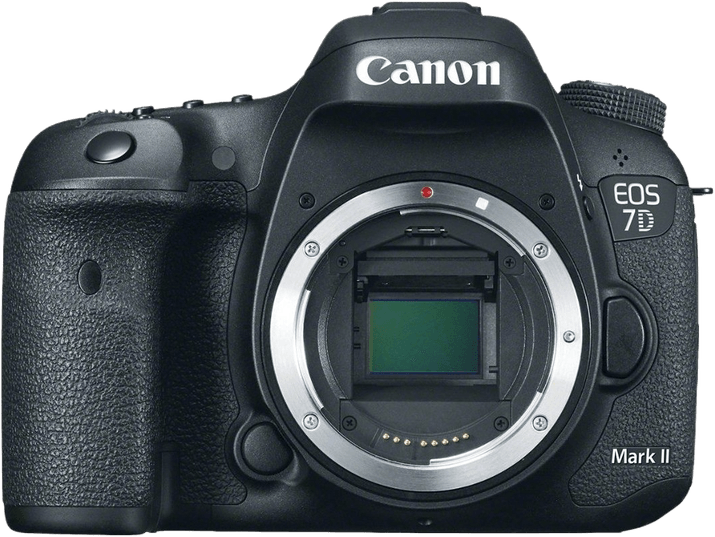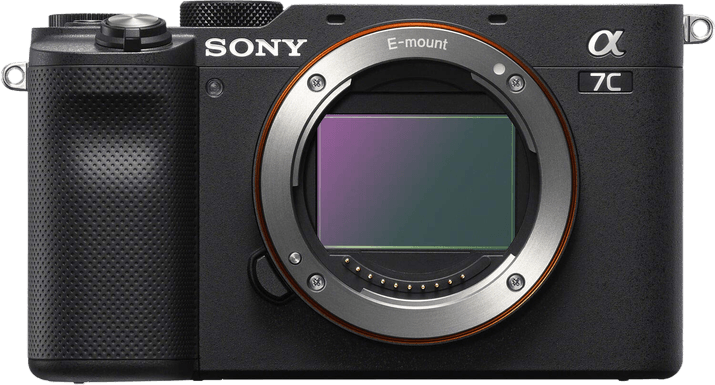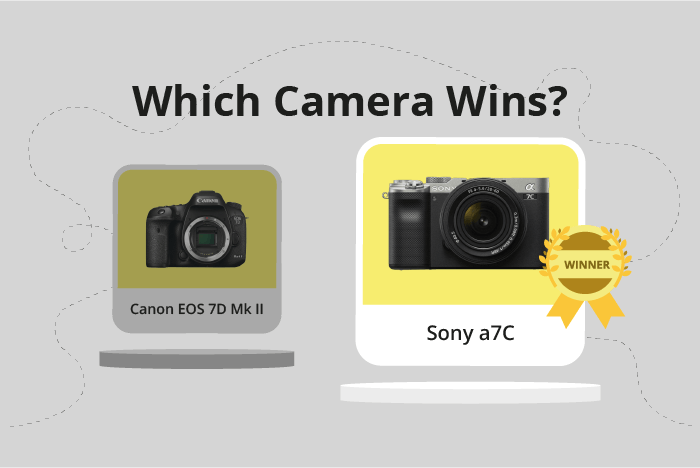Canon EOS 7D Mark II vs Sony a7C Comparison
Canon EOS 7D Mark II

Sony a7C

The Sony a7C outperforms the Canon EOS 7D Mark II with a score of 78/100 compared to the Canon’s 60/100. Both cameras share similarities, such as their launch price at around $1800 and being released in the 2010s. However, the Sony a7C, a mirrorless camera, has several advantages over the Canon EOS 7D Mark II, a DSLR camera.
The Sony a7C is more compact and lightweight, measuring 124 x 71 x 60mm and weighing 509g, while the Canon EOS 7D Mark II measures 149 x 112 x 78mm and weighs 910g. This makes the Sony a7C more portable and convenient for photographers on the go.
On the other hand, the Canon EOS 7D Mark II has its benefits as well, such as being a more established model since its release in 2014, while the Sony a7C was released in 2020. This means that the Canon EOS 7D Mark II may have a larger range of compatible lenses and accessories available.
Taking into account the scores, size, and weight, the Sony a7C stands out as the better option for those seeking a compact and high-performing camera, while the Canon EOS 7D Mark II may be more suitable for photographers who prioritize a wider range of lens options and accessories.
Canon EOS 7D Mark II vs Sony a7C Overview and Optics
The Sony a7C outperforms the Canon EOS 7D Mark II in optics, with a score of 80/100 compared to the Canon’s 61/100. Both cameras share some specifications, including a CMOS sensor type, a shooting speed of 10 frames per second, and compatibility with their respective lens mounts (Canon EF-S for the 7D Mark II and Sony FE for the a7C).
The Sony a7C’s superiority in optics is evident in several areas. It has a higher megapixel count of 24.2, compared to the Canon’s 20.2, which allows for more detailed images. The a7C also boasts a full-frame sensor, which provides better low-light performance and a shallower depth of field. Furthermore, the Sony a7C has a higher DXOMARK score of 95 for its sensor, compared to the Canon’s score of 70, indicating better overall image quality. Additionally, the a7C has built-in image stabilization, which helps reduce camera shake and improve image sharpness.
While the Canon EOS 7D Mark II falls short in these areas, it does have a dual Digic 6 processor, which can result in faster processing and image rendering. However, this advantage does not outweigh the benefits offered by the Sony a7C’s optics.
In comparing the optics of the Sony a7C and the Canon EOS 7D Mark II, the a7C is the clear winner with its higher megapixel count, full-frame sensor, better DXOMARK score, and built-in image stabilization. The Canon 7D Mark II’s dual Digic 6 processor is a noteworthy feature, but it does not compensate for the overall superior optics of the Sony a7C.
Canon EOS 7D Mark II vs Sony a7C Video Performance
The Sony a7C triumphs over the Canon EOS 7D Mark II in terms of video capabilities, with a score of 70/100 compared to the Canon’s 56/100. Both cameras share some common video features, including the ability to record high definition video, but the Sony a7C boasts superior specifications in several areas.
The Sony a7C outperforms the Canon EOS 7D Mark II with its maximum video resolution of 4K (3840 x 2160), compared to the Canon’s Full HD (1920 x 1080) resolution. This higher resolution allows the Sony a7C to capture more detailed and sharper video footage. Additionally, the Sony a7C has built-in time-lapse functionality, enabling users to create stunning time-lapse videos without the need for external accessories or software. This is a feature that the Canon EOS 7D Mark II lacks.
However, the Canon EOS 7D Mark II does have a higher maximum video frame rate of 60fps, compared to the Sony a7C’s 30fps. This allows the Canon to capture smoother video footage, particularly when recording fast-moving subjects or action. This advantage is somewhat limited by the lower video resolution, but it is still a notable benefit for certain types of video recording.
Taking these factors into consideration, the Sony a7C emerges as the superior camera for video capabilities due to its higher resolution and built-in time-lapse functionality. The Canon EOS 7D Mark II, while offering a higher frame rate, falls behind in other areas, making it less suitable for users who prioritize video recording.
Canon EOS 7D Mark II vs Sony a7C Features and Benefits
The Sony a7C outperforms the Canon EOS 7D Mark II in features, scoring 81/100 compared to the Canon’s 57/100. Both cameras have a 3-inch screen and offer WIFI capabilities. However, the Sony a7C has several advantages that contribute to its higher score.
The Sony a7C’s screen has a resolution of 921,600 dots, while the Canon EOS 7D Mark II’s screen resolution is slightly higher at 1,040,000 dots. Despite this difference, the Sony a7C offers a touchscreen and a flip screen, which the Canon EOS 7D Mark II lacks. These features make the Sony a7C more user-friendly and versatile for various shooting situations.
Another advantage of the Sony a7C is its Bluetooth connectivity, which the Canon EOS 7D Mark II does not have. This allows for seamless connection to other devices and remote control options.
On the other hand, the Canon EOS 7D Mark II has a built-in GPS, which the Sony a7C does not offer. This feature could be useful for photographers who need to geotag their images for location-specific projects or organization purposes.
Considering the features of both cameras, the Sony a7C is a stronger choice due to its touchscreen, flip screen, and Bluetooth capabilities. These enhancements provide greater convenience and flexibility for users. The Canon EOS 7D Mark II’s GPS functionality may be beneficial for some photographers, but it does not outweigh the advantages offered by the Sony a7C. Therefore, the Sony a7C is the superior camera in terms of features.
Canon EOS 7D Mark II vs Sony a7C Storage and Battery
The Canon EOS 7D Mark II outperforms the Sony a7C in storage and battery with a score of 65/100, while the Sony a7C scores 45/100. Both cameras accept SD, SDHC, and SDXC memory cards. However, the Canon 7D Mark II has two memory card slots and also supports Compact Flash cards, giving it an advantage in storage capacity and versatility. The Sony a7C has just one memory card slot and is UHS-II compatible.
In terms of battery life, the Sony a7C lasts longer with 740 shots, compared to the Canon 7D Mark II’s 670 shots. The Sony a7C also offers USB charging, providing more convenience for on-the-go photographers. Despite these advantages, the Canon 7D Mark II still wins in overall storage and battery performance due to its dual memory card slots and support for Compact Flash cards.
Hence, the Canon EOS 7D Mark II is a better choice for photographers who prioritize storage and battery performance, while the Sony a7C may be more suitable for those who value longer battery life and USB charging capabilities.
Canon EOS 7D Mark II vs Sony a7C – Our Verdict
Are you still undecided about which camera is right for you? Have a look at these popular comparisons that feature the Canon EOS 7D Mark II or the Sony a7C:

